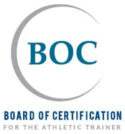
Las Vegas, Nevada – The Mulligan Concept™ Upper Quadrant Course
Instructor: Jennifer Hamsher
Original price was: $599.00.$499.00 (Good through October 25, 2025)Current price is: $499.00.
8:00am – 5:30pm
to
7:30am – 1:30pm (no lunch)
UNLV
Spinal and Peripheral Manual Therapy Treatment Techniques For Upper Quadrant
This two-day course will present the Mulligan approach to manual therapy for the Cervical and Thoracic spine as well as for the upper extremity. It will include lecture, patient demonstrations, and lab time to give the participants a thorough and in depth coverage of the Mobilization With Movement ™ approach for the upper quarter. This unique approach to manual therapy was discovered and developed by Brian Mulligan F.N.Z.S.P. (Hon), Dip. M.T. from Wellington, New Zealand. This simple yet effective manual approach addresses musculoskeletal disorders with pain free manual joint “repositioning” techniques for restoration of function and abolition of pain.
- PTs and PTAs will receive 13 CEU’s for those holding license in the state of NV. For those residing outside of the state of NV, please contact your the course instructor to determine if pre-approval has been obtained. If the state in which you practice is not pre-approved, contact your state governing board to determine reciprocity for your state. All forms required to submit individually for CEU’s can be found on this website under Courses/CEU
- ATs will receive 13 CEUs from the NATA Board of Certification CEU Provider P3566
- OTs receive 1.5 CEU’s from the AOTA (AOTA#000973)
- Certificate for 13 contact hours always given.
By the end of the course the participant will be able to accurately:
- List 3 key manual components of Mobilization With Movement ™ for the treatment of upper quarter.
- Demonstrate 3 shoulder MWM techniques for shoulder elevation impairment.
- Demonstrate 2 elbow MWM techniques for loss of motion and tennis elbow.
- List 2 indications for wrist/hand taping procedures for the proximal row of carpals and the metacarpals to reinforce an MWM technique.
- Demonstrate 3 key variables that may need to be modified for pain-free effective MWM of the upper extremity, cervical and thoracic spine.
- Demonstrate 3 manual upper cervical techniques used for the alleviation of cervicogenic headaches
- Demonstrate 3 manual upper cervical techniques used for the alleviation of cervicogenic dizziness
- Demonstrate central and unilateral manual SNAG techniques for the pain-free improvement of cervical and thoracic ROM.
- Cite at least 2 RCT studies that support cervical snags for headaches and dizziness
- Cite at least 2 RCT studies that support the MWM approach to Tennis elbow
- Integrate one combined shoulder MWM and cervical SNAG when presented with a persistent cervical / shoulder musculoskeletal dysfunctional pattern.
UPPER QUARTER TIME SCHEDULE and PROGRAM CONTENT
Precourse Video
Precourse video (to be sent to all participants in the Pre-course email 1-2 weeks prior to the course):
Pre-course video outline (1 hour 5 minute video)
0 – 5:00 Course and Mulligan Concept Intro: Mark Thomson’s background
5:00 – 6:51 Who is Brian Mulligan?
6:51 – 23:39 Effects of manual therapy and Mulligan Concept mechanisms of action
23:40 – 25:40 Evidence for manual therapy vs hands off approach
25:40 – 29:03 Mulligan Concept resources and “tools of the trade”
29:03 – 32:50 How was the Mulligan Concept born?
32:50 – 34:40 IP example of MWM
34:40 – 36:04 3 things about the Mulligan Concept that require the most practice!
36:04 – 37:10 Establishment of the Mulligan Concept Teacher Association
37:10 – 42:48 What is the Mulligan Concept?
42:48 – 1:00 CROCKS
1:00 – 1:02:40 MWM’s are one part of a thorough examination
1:02:40 – 1:03:10 PILL EFFECT
1:03:10. REVIEW
DAY 1:
- 7:45-8:00Sign in and Registration, Pre-test
- 8:00-9:00Mulligan theory, guidelines for practical application of Mobilization With Movement (MWM’s): CROCKS and PILL
- 9:00-9:30Upper Cervical lecture: evidence for evaluation and assessment of Upper Cervical pain, mobility loss, headaches and cervicogenic dizziness.
- 9:30-10:00Upper Cervical lab practice for Headache/Cervicogenic Dizziness and pain/Mobility loss.
- 10:00-10:15Break time
- 10:15-12:00Cervical demonstration and lab practice: Natural Apophyseal Glides (NAGs), Reverse NAGs, Sustained Natural Apophyseal Glides (SNAGs).
- 12:00-1:00Lunch
- 1:00- 2:00Cervical demonstration and lab practice: SNAGs continued. Self-SNAGS/HEP/Self management.
- 2:00-2:30Cervical demonstration & lab practice: traction techniques, Transverse SNAG’s (Positional SNAGS’s), Spinal Mobilization with Arm Movement.
- 2:30- 2:45Break time
- 2:45- 4:30Rib and Thoracic demonstration and lab practice: MWM for the ribs and thoracic.
- 4:30-5:00 Hand demonstration and lab practice: IP, MCP, Metacarpals, Carpals, and taping techniques.
- 5:00 – 5:30 Literature evidence for evaluation and treatment of Wrist. Demonstration and lab practice of MWMs and taping
DAY 2: (NOTE: Day 2 of this course will start at 8:00AM and end at 2:00PM)
- 7:30-8:00 Review of key Day 1 concepts and ideas
- 8:00-8:30 Demonstration and lab practice of MWMs for Supination and Pronation
- 8:30-10:45 Elbow demonstration and lab practice, HEP/ patient self-management
- 10:45-11:00 Break Time
- 11:00-1:30Literature evidence for evaluation and treatment of the Shoulder. Demonstration and lab practice to include Glenohumeral, Acromioclavicular and scapulothoracic MWM’s, and Self-Management
- 1:30 Post Test and Course evaluation
Wear loose, comfortable lab clothes. Bring mobilization belts, mobilization pads, if available.
To facilitate your learning and preparation for the course, it is recommended that you purchase a mobilization belt, contact pad, and Brian Mulligan’s 7th edition textbook. Other tools to facilitate learning include video tutorials of the techniques presented in the courses. Click the product links below for information and purchase.
Read our complete cancellation policies.
Only 30 left





